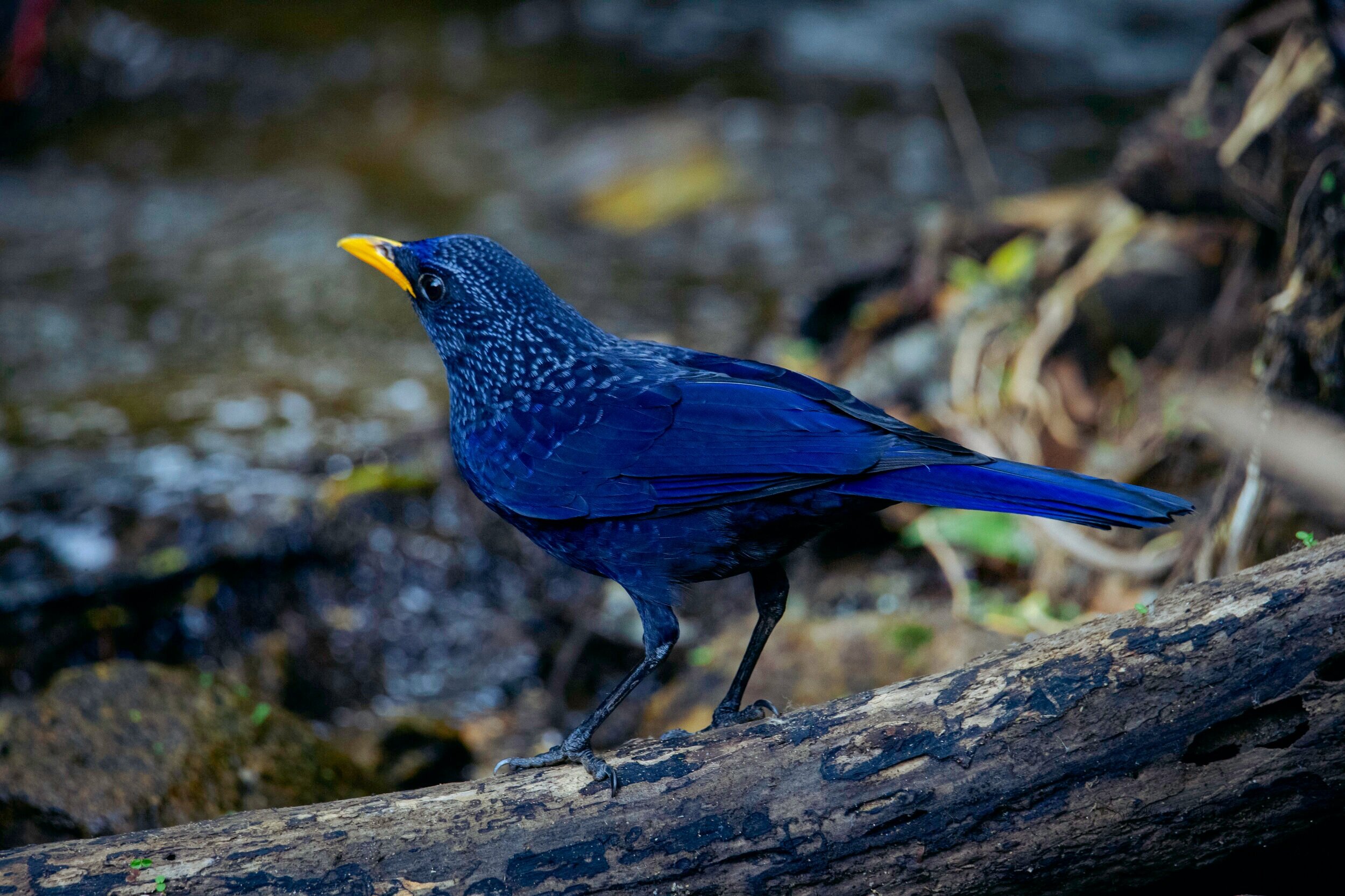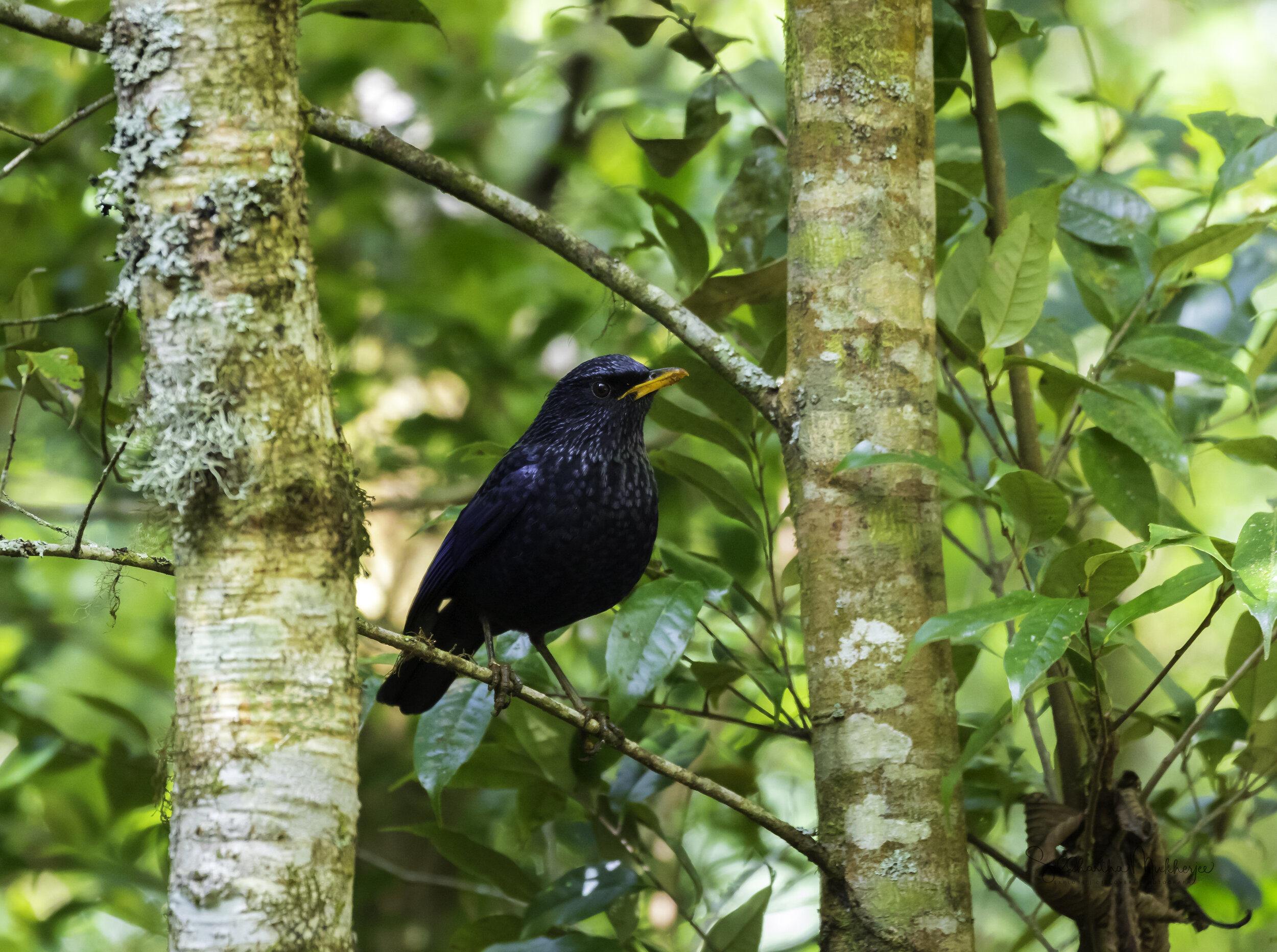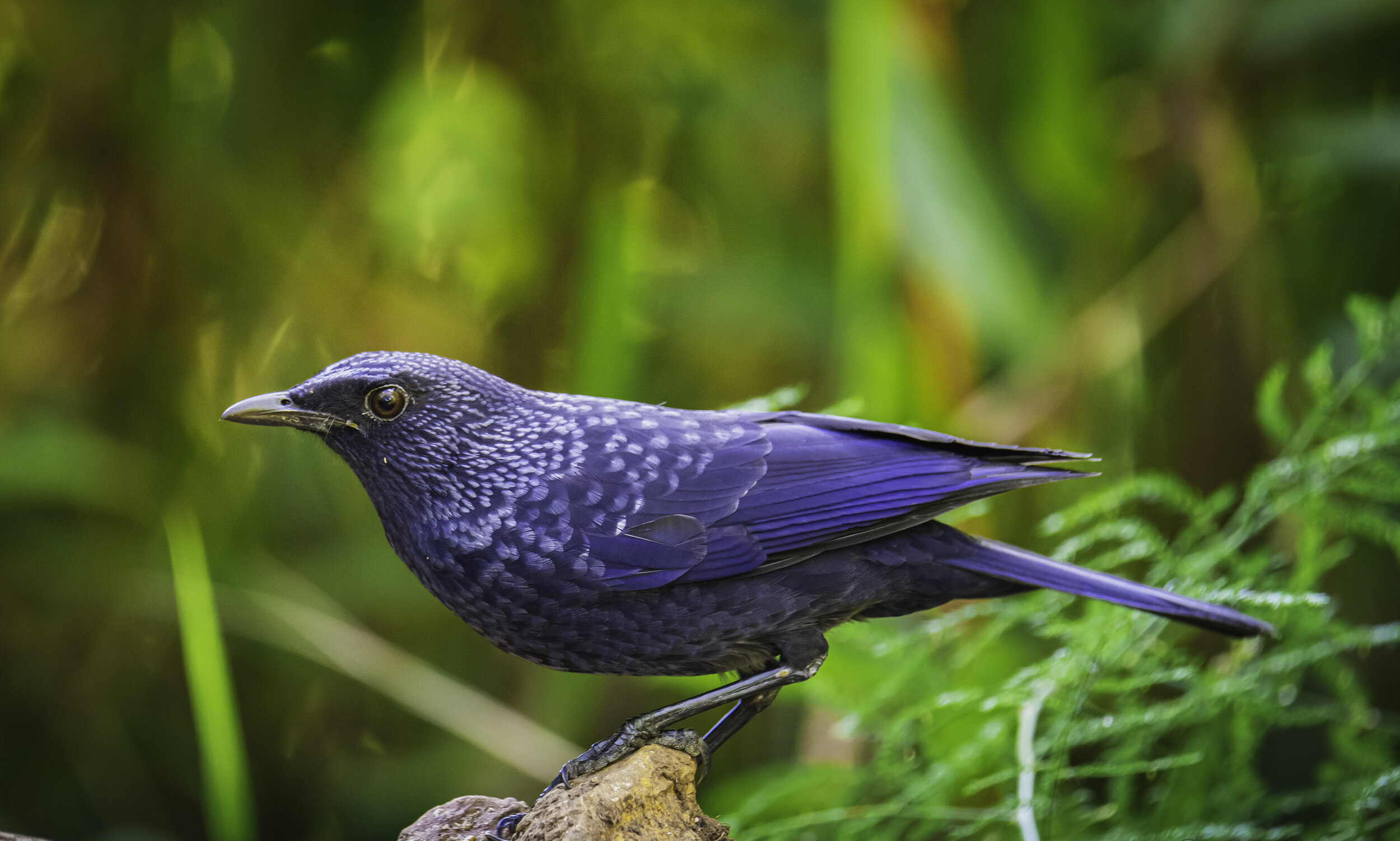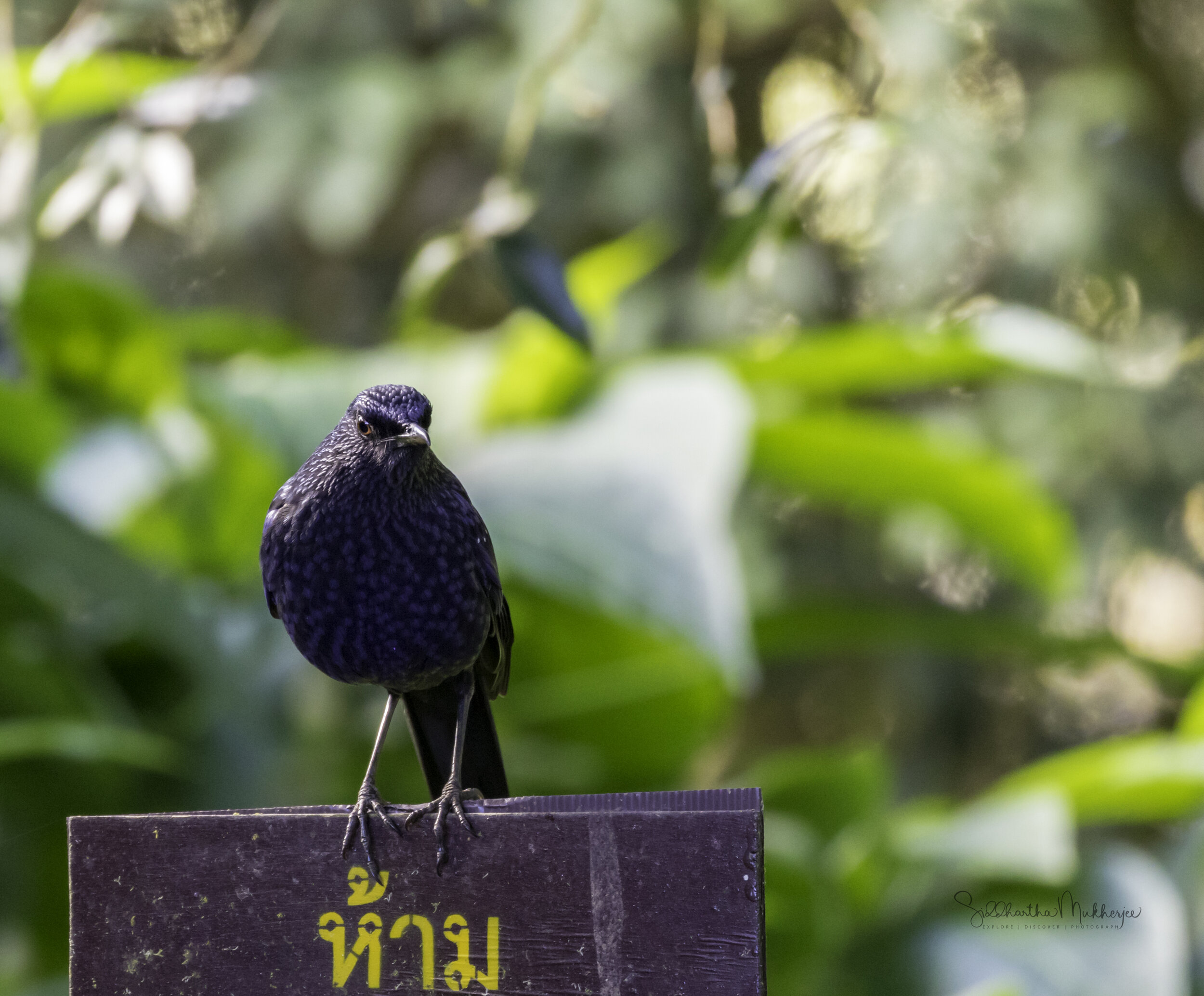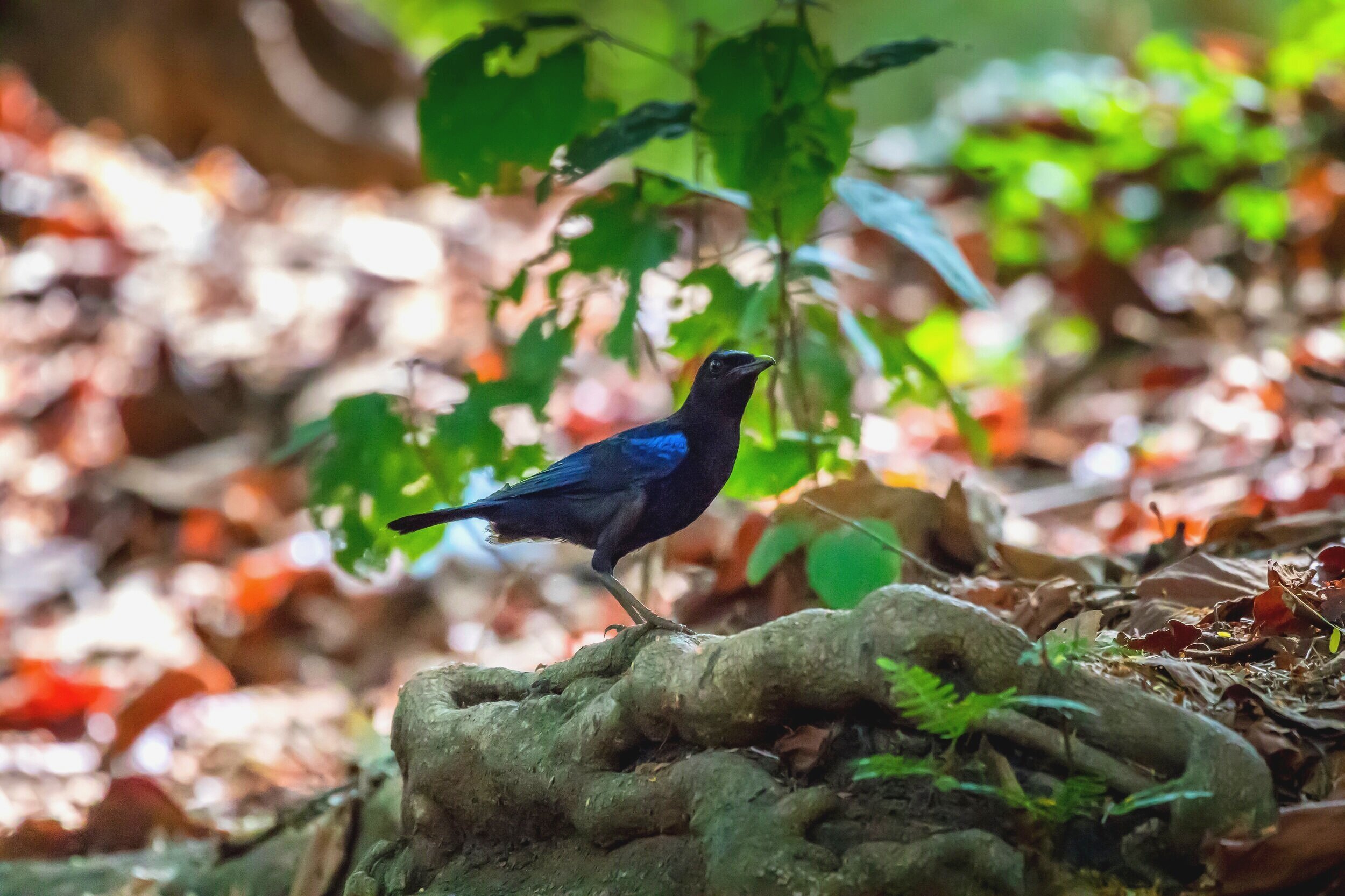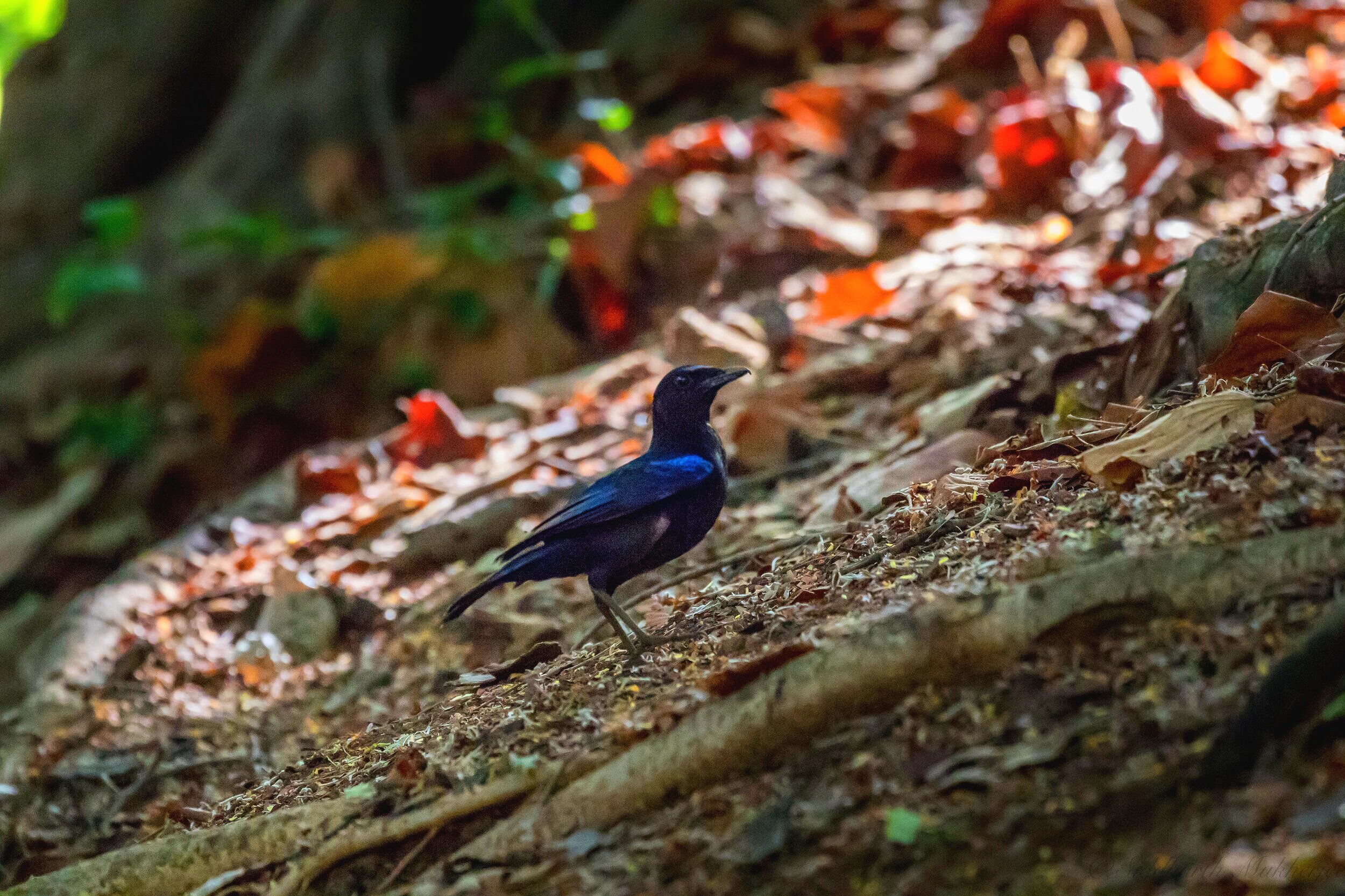Blue Whistling Thrush
The whistling schoolboy of the forests
Whistling Thrushes
For more videos: Video Shorts
Sometimes, in the forests near a rocky stream, you can hear an eerie and human-like series of variable, deliberate-sounding whistles. It is in all likelihood a whistling thrush. Known locally as the whistling schoolboy of the forests for the whistling calls they make at dawn that have a very human quality.
The Whistling Thrushes comprise a genus Myophonus (Myiophoneus) of the Old World flycatcher family Muscicapidae. They are all medium-sized mostly insectivorous or omnivorous birds. They are all brightly coloured species found in India and southeast Asia. The male is usually blue, and the females are either similar to the male or brown. The brighter blue patches found on the shoulders and sometimes the head, of whistling thrushes, uniquely for a passerine, reflect strongly in the ultraviolet.
As the English name suggests, the genus was at one time placed in the thrush family Turdidae but in 2010 two separate molecular phylogenetic studies found that members of the genus were more closely related to species in the Old World flycatcher family Muscicapidae.
The genus includes nine species several of which have ranges that are restricted to islands or peninsulas:
Myophonus blighi ~ Sri Lanka Whistling Thrush ~ Found in Sri Lanka
Myophonus melanurus ~ Shiny Whistling Thrush ~ Found in Sumatra
Myophonus castaneus ~ Brown Winged Whistling Thrush ~ Found in Sumatra
Myophonus glaucinus ~ Javan Whistling Thrush ~ Found in Java
Myophonus borneensis ~ Bornean Whistling Thrush ~ Found in Borneo
Myophonus robinsoni ~ Malayan Whistling Thrush ~ Found in peninsular Malaysia
Myophonus insularis ~ Taiwan Whistling Thrush ~ Found in Taiwan
Myophonus horsfieldii ~ Malabar Whistling Thrush ~ Found in peninsular India
Myophonus caeruleus ~ Blue Whistling Thrush ~ from Central Asia east to China and south to the Sundas
Featured in this blog are the last two species listed here ~ the Blue Whistling Thrush (two nominates: the yellow billed and the black billed) & the Malabar Whistling Thrush.
Whistling thrushes are mostly seen in hilly areas except during winter when they may descend to streams near the plains. They specialise in feeding on snails and their strong hooked bills are used to deal with them. They may choose a particular rock on which they crack the shells. The nests are usually in crevices of rocks and boulders close to water. The cup nests have moss and twigs and is lined with roots and leaves. The eggs are usually three and sometimes four, elongate with a gray ground colour and marked with speckles.
Blue Whistling Thrush (Nominate with a yellow bill)
Blue Whistling Thrush Range
The Blue Whistling Thrush (Myophonus caeruleus) is a large bird usually found along streams in forested hills and mountains. It is a beautiful dark purple with tiny silvery spots on head, back, and wings. The bill color varies with range: dark in central and eastern China and parts of mainland Southeast Asia, bright yellow in populations elsewhere ~ both nominates are illustrated here. They frequently fan their tail while standing on an exposed perch such as a waterside rock or overhanging branch. True to its name, it does whistle: a long piercing note that carries well over the sound of rushing water.
It is known for its loud human-like whistling song at dawn and dusk. The widely distributed populations show variations in size and plumage with several of them considered as subspecies. Like others in the genus, they feed on the ground, often along streams and in damp places foraging for snails, crabs, fruits and insects.
This whistling thrush is dark violet blue with shiny spangling on the tips of the body feathers other than on the lores, abdomen and under the tail. The wing coverts are a slightly different shade of blue and the median coverts have white spots at their tips. The bill is yellow and stands in contrast. The inner webs of the flight and tail feathers is black. The sexes are similar in plumage.
It measures 31–35 cm (12–14 in) in length. Weight across the subspecies can range from 136 to 231 g (4.8 to 8.1 oz). For comparison, the blue whistling thrush commonly weighs twice as much as an American robin. Among standard measurements, the wing chord can measure 15.5–20 cm (6.1–7.9 in) long, the tarsus is 4.5–5.5 cm (1.8–2.2 in) and the bill is 2.9–4.6 cm (1.1–1.8 in). Size varies across the range with larger thrushes found to the north of the species range and slightly smaller ones to the south, corresponding with Bergmann's rule. In northern China, males and females average 188 g (6.6 oz) and 171 g (6.0 oz), whereas in India they average 167.5 g (5.91 oz) and 158.5 g (5.59 oz).
Several populations are given subspecies status. The nominate form with a black bill is found in central and eastern China. The population in Afghanistan, turkestanicus, is often included in the widespread temminckii which has a smaller bill width at the base and is found along the Himalayas east to northern Burma. The population eugenei, which lacks white spots on the median coverts, is found south into Thailand. Cambodia and the Malay peninsula have crassirostris, while dichrorhynchus with smaller spangles occurs further south and in Sumatra. The Javan population, flavirostris, has the thickest bill. The subspecies status of several populations has been questioned.
Blue Whistling Thrush (Nominate with a black bill) M. c. caeruleus (Scopoli, 1786) – Black-billed Whistling-thrush – C & E China (from SE Gansu and E Sichuan, E to N Hebei and Zhejiang, S to Guangdong and Guangxi); non-breeding also S to E Myanmar, N Thailand, Laos and N Vietnam.
It is found along the Tian Shan and Himalayas, in temperate forests and subtropical or tropical moist montane forests. The species ranges across Afghanistan, Bangladesh, Bhutan, Cambodia, India, Indonesia, Kazakhstan, Laos, Malaysia, Myanmar, Nepal, Tajikistan, Thailand, Tibet, Turkmenistan, and Vietnam. They make altitudinal movements in the Himalayas, descending in winter.
The blue whistling thrush is usually found singly or in pairs. They hop on rocks and move about in quick spurts. They turn over leaves and small stones, cocking their head and checking for movements of prey. When alarmed they spread and droop their tail. They are active well after dusk and during the breeding season (April to August) they tend to sing during the darkness of dawn and dusk when few other birds are calling. The call precedes sunrise the most during November. The alarm call is a shrill kree. The nest is a cup of moss and roots placed in a ledge or hollow beside a stream. The usual clutch consists of 3 to 4 eggs, the pair sometimes raising a second brood. They feed on fruits, earthworms, insects, crabs and snails. Snails and crabs are typically battered on a rock before feeding. In captivity, they have been known to kill and eat mice and in the wild have been recorded preying on small birds.
Malabar Whistling Thrush Range
The Malabar Whistling Thrush (Myophonus horsfieldii) is a is a whistling thrush in the family Muscicapidae. It is a deep blue ground-dweller with a shining forehead and shoulder patches. Their belly can appear mottled blue-and-black in the right lighting. It inhabits foothills and montane forests, where it sticks closely to water, especially rocky streams and smaller rivers with overhanging vegetation and rocky ledges. Their song is an eerie and human-like series of variable, deliberate-sounding whistles. Call is a high thin “tseeeeee.”
They are also known locally by the name of whistling schoolboy for the whistling calls that they make at dawn that have a very human quality. The species is a resident in the Western Ghats and associated hills of peninsular India including central India and parts of the Eastern Ghats. This large thrush appears blackish with shiny patches of blue on the forehead and shoulders. The blue becomes visible only in oblique lighting. The bill and legs are black. The sexes are indistinguishable and juveniles are more brownish and lack the blue forehead.
Related Posts

